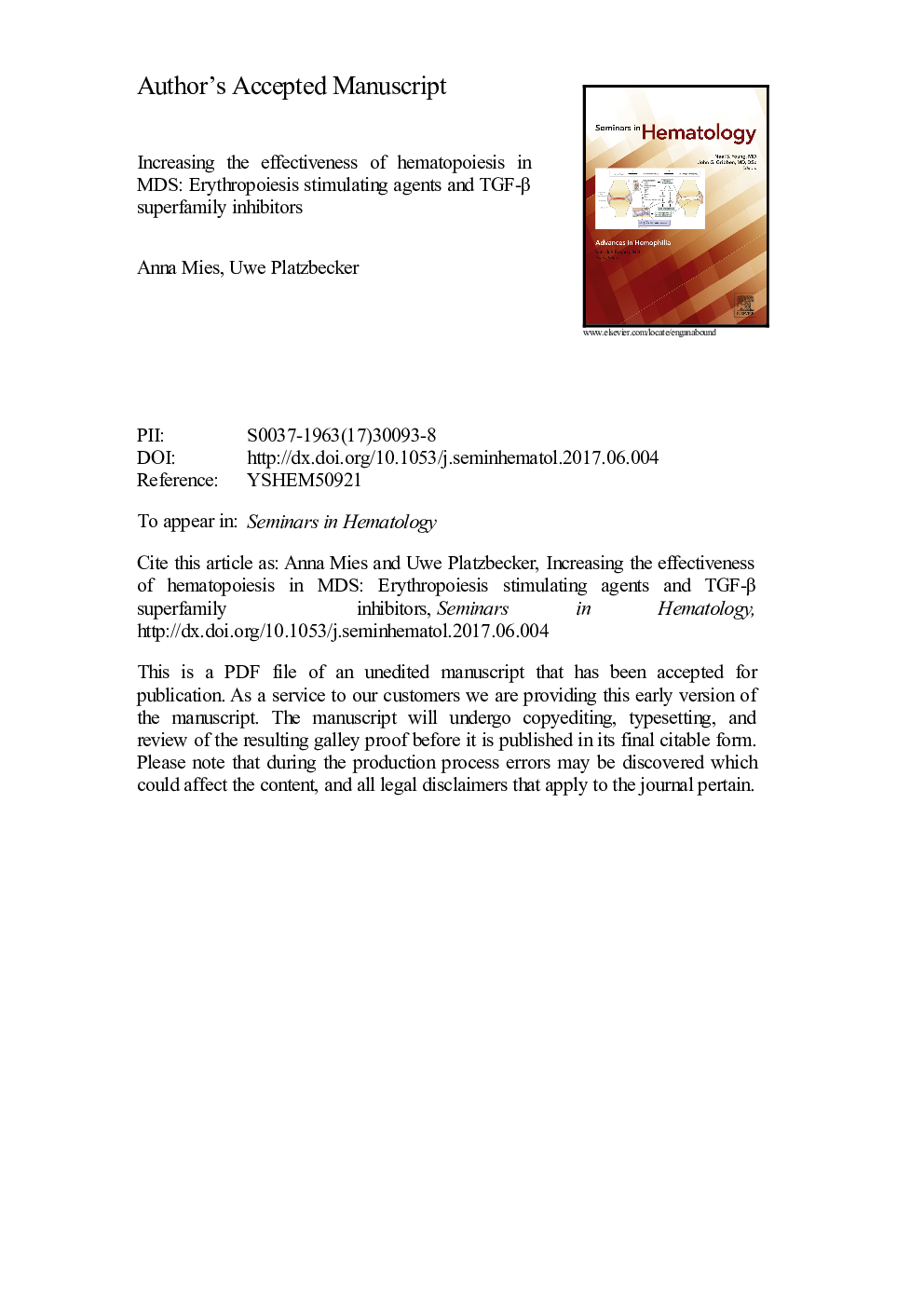| Article ID | Journal | Published Year | Pages | File Type |
|---|---|---|---|---|
| 5664392 | Seminars in Hematology | 2017 | 13 Pages |
Abstract
Patients with lower-risk myelodysplastic syndromes (MDS) are mainly affected by chronic anemia and fatigue. Treatment strategies aim to improve anemia and quality of life, as well as iron overload due to red blood cell transfusion support. To promote proliferation and differentiation of erythropoiesis, erythropoiesis-stimulating agents (ESAs) such as erythropoietin (EPO) and mimetics are applied as first-line therapy in a large fraction of lower-risk MDS patients. In general, ESAs yield favorable responses in about half of the patients, although responses are often short-lived. In fact, many ESA-refractory patients harbor defects in late-stage erythropoiesis downstream of EPO action. Novel transforming growth factor (TGF)-β superfamily inhibitors sotatercept and luspatercept represent a promising approach to alleviate anemia by stimulating erythroid differentiation.
Related Topics
Health Sciences
Medicine and Dentistry
Hematology
Authors
Anna Mies, Uwe Platzbecker,
